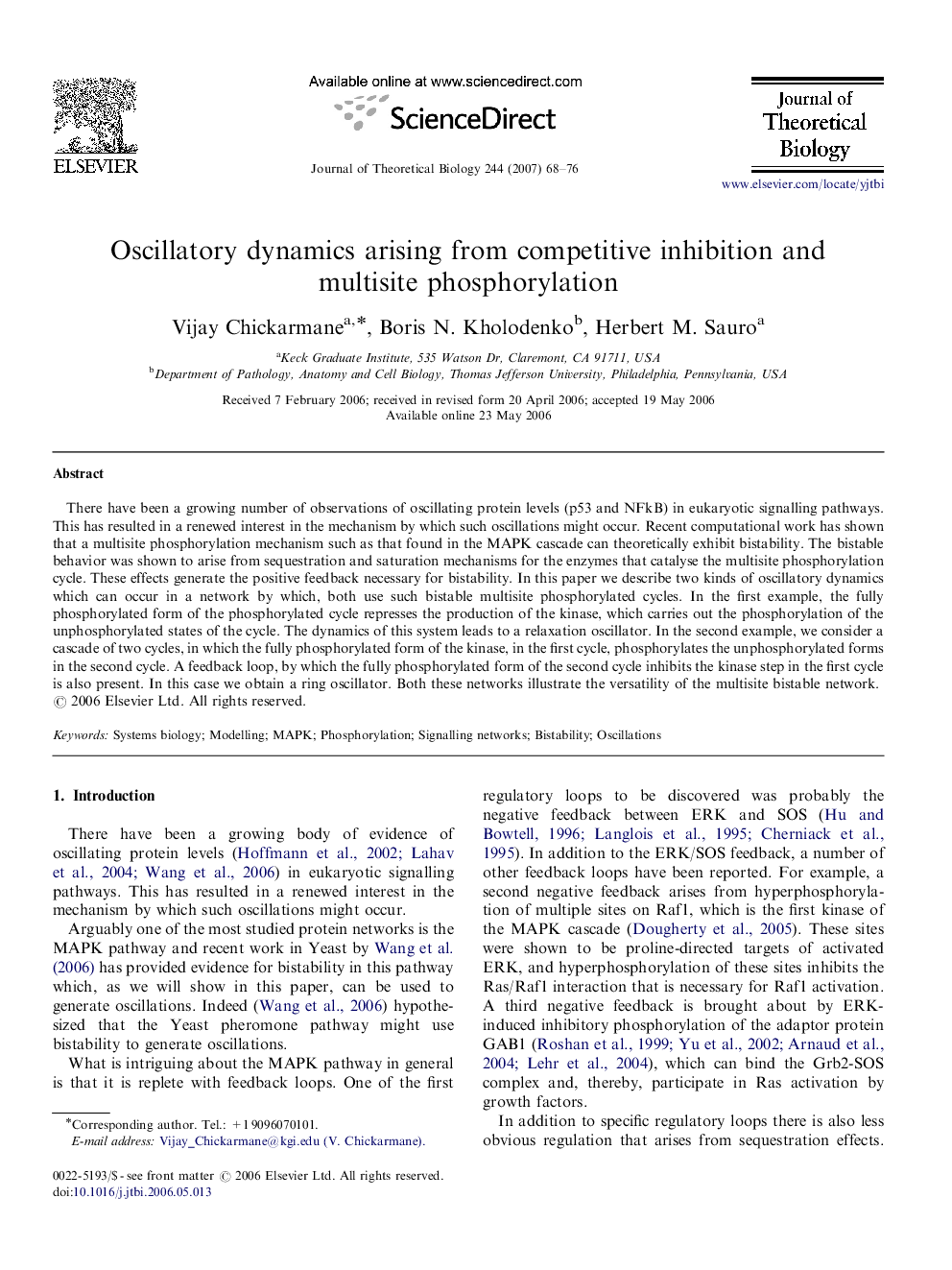| Article ID | Journal | Published Year | Pages | File Type |
|---|---|---|---|---|
| 4499079 | Journal of Theoretical Biology | 2007 | 9 Pages |
There have been a growing number of observations of oscillating protein levels (p53 and NFkB) in eukaryotic signalling pathways. This has resulted in a renewed interest in the mechanism by which such oscillations might occur. Recent computational work has shown that a multisite phosphorylation mechanism such as that found in the MAPK cascade can theoretically exhibit bistability. The bistable behavior was shown to arise from sequestration and saturation mechanisms for the enzymes that catalyse the multisite phosphorylation cycle. These effects generate the positive feedback necessary for bistability. In this paper we describe two kinds of oscillatory dynamics which can occur in a network by which, both use such bistable multisite phosphorylated cycles. In the first example, the fully phosphorylated form of the phosphorylated cycle represses the production of the kinase, which carries out the phosphorylation of the unphosphorylated states of the cycle. The dynamics of this system leads to a relaxation oscillator. In the second example, we consider a cascade of two cycles, in which the fully phosphorylated form of the kinase, in the first cycle, phosphorylates the unphosphorylated forms in the second cycle. A feedback loop, by which the fully phosphorylated form of the second cycle inhibits the kinase step in the first cycle is also present. In this case we obtain a ring oscillator. Both these networks illustrate the versatility of the multisite bistable network.
